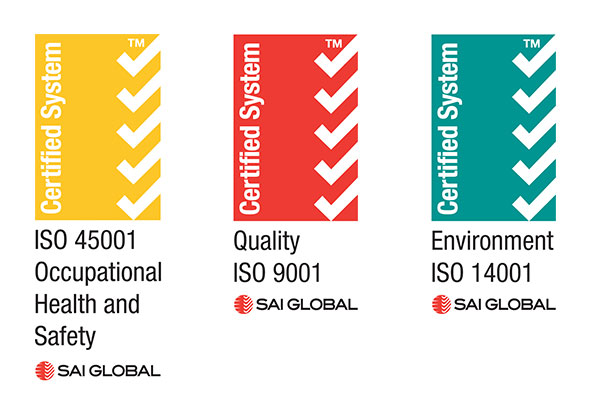Australian Mining
Mining is our nation’s largest and most stable for-profit sector. An enormous component of Australia’s domestic and international economies, mining provides some of Australia’s most stable, reliable, and high-income jobs. It has maintained its resilience despite the COVID-19 pandemic; the only other sectors to record a profit during this period were financial services, public administration, and safety, education, and training.
According to the Australian Bureau of Statistics:
- Mining is our largest by-share sector.
- By 2020, 261,000 Australians were employed by the mining sector. This is projected to grow by 6.2% by 2024.
- In the year to June 2020, the mining sector represented more than 10% of Australia’s total economy, growing by 1,1%.
- In the year to June 2020, Australian energy and resource exports were valued at more the $221.2 billion.
- The value of Australia’s mining exports has increased, especially for iron ore. As such, Australia is currently the world’s largest iron ore exporter, delivering more than 50% of all of these exports. This is predicted to reach a value of $98.3 billion for the 2020-2021 financial year.
- Australia annually exports $26 billion in thermal coal for power generation and $43 billion worth of metallurgical coal for steel production.
Furthermore:
- Confidence in the long-term stability of the Australian mining sector is high, with several newly-identified mineral deposits throughout the country.
- As of March 2020, the Australian government announced that government approval would thereafter be required for all foreign mining investments to proceed, with a six-month application review period. The effect of this was that mining investment increased.
- The CSIRO (Commonwealth Scientific & Industrial Research Organisation) backs several mining sector projects, including a laboratory that develops metal additive technology and 3D printing, as well as an underground mine remote worker-tracking network safety tool.
Coal – Information and Statistics
Coal begins as peat and is formed from accumulated organic matter altered over millions of years by decay, pressure, and temperature extremes. It occurs in layers between harder sedimentary rock, and coal seams or beds may between less than a millimetre to many hundreds of metres thick.
Coal has been used by humans since ancient times as fuel for heat, and more recently for metal refinery and electricity production. Our largest energy resource in Australia, coal-fired power stations produce 60% of our country’s electricity needs.
Coal varies in terms of type, rank, and grade:
Black coal – includes anthracite, bituminous, and sub-bituminous coal. Can be bright and shiny or dull; hard or soft. It has a higher energy potential and lower moisture content. Black coal is used to make coke, which itself is used in iron and steel production (in blast furnaces) as well as cement manufacturing, paper manufacturing, alumina refinery, and other metallurgical and industrial applications.
Brown coal – also called lignite, brown coal has high moisture content and is ranked lower than black coal. Brown coal is mostly used for electricity generation; it is also used to create briquettes and low-ash char products.
Australia’s mineable black coal deposits date between 280–150 million years old; our brown coal deposits are much younger (150–50 million years old).
Our principal black coal basins are:
- Bowen Basin (Qld)
- Sydney Basin (NSW)
- Collie (WA)
- Leigh Creek (SA)
- Fingal and Kimbolton (Tas)
Brown coal deposit locations are:
- Gippsland Basin (Vic)
- Otway Basin (Vic)
- Murray Basin (Vic/SA)
- North St Vincents Basin (SA)
- Eucla Basin (WA)
- Longford Basin (Tas)
The only brown coal currently mined in Australia is from open-cut mines in Victoria.
Australia has coal resources in most states, with the vast majority located in Qld (63%) and NSW (23%).
- We have the fourth-largest coal resources worldwide, after the USA, Russia and China. Other countries with significant coal resources include India, Germany, Ukraine, Kazakhstan, South Africa, and Columbia.
- Australia is the world’s fourth-largest producer of coal, after China, the USA, and India. The other major coal producers are Russia, Indonesia, South Africa, Germany, Poland, and Kazakhstan.
- We are globally the largest exporter of coal with a 54% share, despite producing only 5% of total coal worldwide.
Coal Mining Trends
80% of Australian coal produced is mined from open-cut mines, whereas globally, open-cut mining accounts for only 40% of coal produced. Queensland produces the most coal Australia wide.
Open-cut mining Is more affordable than underground mining and allows for 90% recovery of the raw resource in situ.
An EDR, or economic demonstrated resource, is defined by Geoscience Australia as a resource that is considered profitable for production or extraction. Coal as an EDR has risen and fallen at various times over the past three decades.
Despite growing environmental awareness and concern, the future of coal mining in Australia is strong. Australian coal is more efficient and “cleaner” than other coal produced worldwide – representing better environmental outcomes when coal-fired power and industry are required. Global demand for our coal continues and our capacity to meet these needs at a competitive price is stable.
Choose PIMS for Underground Coal Mining Solutions
Pacific International Mining Solutions, or PIMS Group, is an experienced Australian underground mining contractor. We specialise in underground coal mining projects, delivering the superior solutions our business partners seek: equipment, training, people, and project management.
We invite you to understand more about our services and training.
Call our Head Office on (07) 4969 3900 or contact us via email at admin@pimsgroup.com.au



